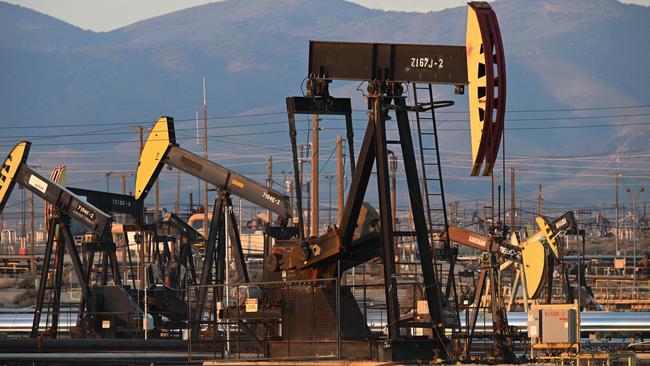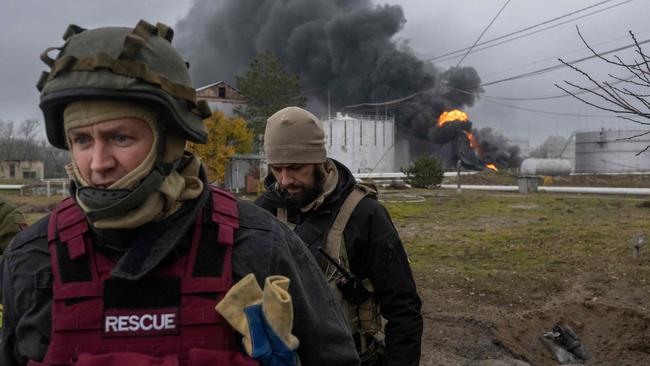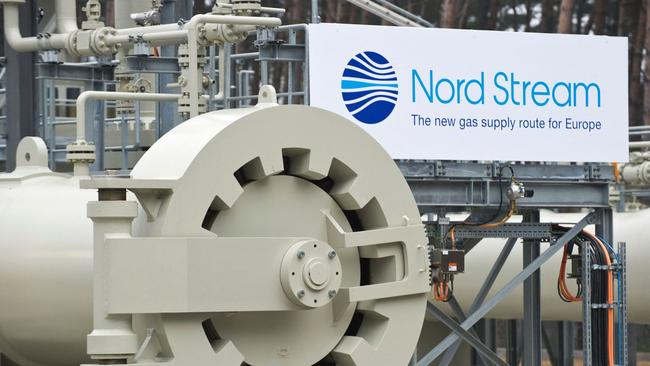Why energy stocks are likely to lag in 2023

That is good for consumers, but not for energy stocks, whose roaring 2022 likely fades to a lacklustre 2023. Here is why.
First, consider how quickly, and how much, global conditions changed. After Russian President Vladimir Putin’s horrific February invasion, oil soared past US$130 per barrel and gas prices shot stratospheric.
Few saw any end in sight. Forecasts of US$200 oil were common. Some fretted about near-$US400 scenarios if Russia cut production in retaliation for Western sanctions and bans.
In Australia, headlines warned of 1970s-style shortages and price spikes akin to those Gough Whitlam’s government faced, while winter blackouts chill Europe.
Now? Time and market forces proved those theories wrong. Oil is -36 per cent off June 13’s peak in Australian dollars, and -39 per cent from March’s US dollar peak.
Since August’s spike, Europe’s gas prices plunged -82 per cent. Meanwhile, European gas stockpiles hover nicely above 10-year averages, undercutting shortage fears.
Global liquid fuels production rose 4.4 per cent in 2022, courtesy of OPEC, the US, Canada and Russia.

Yes, despite fears, Russian production rose in 2022.
As I detailed in December, supply chains reshuffled fast after boycotts. Russian crude once destined for Europe simply flowed to India and China, who scooped it up at big discounts.
Discounts meant Russia needed to produce more to sustain itself. That isn’t great for sanctions’ geopolitical effectiveness. But economically, it kept supply abundant, erasing initial price spikes.
In free markets, high prices are signals. They worked perfectly in 2022, spurring more production, facility building and supply reshuffling in Australia and everywhere. Hence, your country’s LNG export volumes hit record highs in 2022, including Australia’s first shipment to Europe. Your renewable energy generation also broke records.
Meanwhile, America’s private shale drilling is booming. Overall US oil and gas rig counts are up 24 per cent year over year. Global energy firms are raking in profits, as are hotels, restaurants and other ancillary businesses serving their employees. Free market magic!
But just as prices are signals to producers, booming production now sends signals to investors – warnings, actually – that energy stocks won’t be in favour.
They are more price sensitive than volume sensitive. So, energy prices matter more than production levels. Forward-looking markets know booming production inflates supply, potentially suppressing future prices.
Consider 2009 to 2020’s global equity bull market: US and world output surged amid America’s “shale revolution,” while the Northern Territory lifted fracking moratoriums and projects like Western Australia’s huge Wheatstone terminal debuted.
Yet world energy stocks rose just 58.4 per cent in that period versus global stocks’ 318.5 per cent. Energy lagged in eight of its nearly 11 full calendar years.
Energy should lag now, with Australian firms hampered by government initiatives, too. Whilst the Albanese government’s big energy relief package eases short-term consumer pain, price caps discourage energy production. (Critics’ accusations of “bullying” are a politicised red herring.)

Export restriction chatter adds uncertainty. This, plus soaring global production, should bring Australian energy down to earth.
Energy bulls claim China’s reopening – alongside Canberra and Beijing’s thawing trade relations – will turbocharge demand, while price caps and oil product bans squeeze Russian production. Maybe. But for Australian energy, Chinese bans lifting wouldn’t mean much beyond potentially redirecting exports from elsewhere in Asia.
The US Energy Information Administration projects world liquid fuels production increasing 1.1 million barrels per day in 2023. That includes big expected Russian cutbacks.
Moreover, 2022 cutback fears proved overblown. The EU found alternate diesel suppliers ahead of February 5’s Russian oil products ban, partly explaining European diesel prices falling afterwards.
Russia is finding other buyers, like Turkey and Morocco. Russian officials acknowledge oil product exports should decrease tied to the EU ban, but say it will increase sales of more easily exportable crude. That is occurring, with seaborne Russian crude shipments jumping to their highest levels since June. Absent global commitment, restrictions never restrict; they simply redirect.
All this rejiggering means 2023 supply proves more abundant than feared, downwardly impacting oil prices and muting energy stocks’ rise.
Then, too, energy’s strong 2022 performance increases the risk it underperforms this year. Leaders usually become laggards when bear markets end. It’s already started.
Since global stocks hit mid-October’s low in US dollar terms, energy is the worst performing industrial sector, continuing through January.
It makes sense to hold some for diversification. But only some and only for that.
Globally, the energy sector’s response to 2022’s spiking prices was a free market master class. Cheer it – but don’t count on that translating to energy stocks leading markets again in 2023.
Ken Fisher is executive chairman of Fisher Investments

What happened to skyrocketing oil? For months after Russia’s Ukraine invasion, forecasts of shortages driving ever-higher oil and gas prices proliferated in Australia and globally. Now? Raw energy prices have stalled or are dropping. Storage tanks are mostly full as production booms.